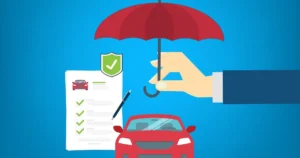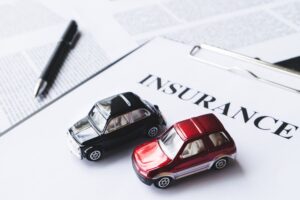
Check Your Car Insurance Policy
The very best and initial measure which can help you to reduce the expenses on your car insurance is to be aware of your existing insurance thoroughly. Too many drivers just do not understand their policy and end up paying more than they have to or may not even be receiving a discount on insurance. Start by looking further at your present limits and deductibles. Do some review and make adjustments in case your coverage is higher than your actual one. To give an example, you might not require transective protection as much as you require to drive a newer car. Instead, in case you are not going to use your vehicle in business context, make sure your policy takes it into account. In case you do not understand some terms and cover options, you can give your insurer a call and request a breakdown. This is an easy act that would enable you figure out possible areas to cut down costs. In case of uncertainty on your policy terms, an agent will make things very clear on what each line of coverage requires and you will only end up paying what you actually want.
Investigate Discounts That Would Help Reduce Your Premium
Discounts that are offered by numerous insurance providers may make your premiums go down considerably. The issue is that not every single discount is automatically taken, and some policyholders do not even know about those. An example is that in some insurers, they have a multi-car discount to those households which have multiple cars. Others can offer a multi-policy discount when putting car insurance together with home or life insurance. And also, provided you do not have a dented driving record, there are insurers who will be willing to give you a so-called good driver discount. Other worthwhile discounts include anti-theft device (discount offering bigger premiums to crowded anti-theft systems fitted vehicles) or safe driver (discount which is available as the insurance holder maintains a free record). Other insurance companies, like Clearcover, automatically discount their rates by including them into the base rate so that policyholders do not have to work too hard to receive the discounts. Your insurer may always be asked about available discounts, particularly though at a time when you have undergone some life change, e.g. getting married or relocating to a new place. Change in life is another qualifier that allows you to get extra savings.
For more information on available discounts, you can explore the Tips for Saving Money on Your Auto Insurance, which highlights the types of discounts you may qualify for based on life changes and more.

Comparison Shopping of the Best Deals
Shopping around is one of the most effective things to do to cut down on car insurance. Insurance providers will always be competing over your business and there is a chance that you get to reduce your premium by just simply changing the provider. The secret then lies in getting quotes from various companies so that you can be in a position to get the best one. You can also conveniently compare insurance rates offered by different companies by taking advantage of internet comparison tools such as The Zebra. Comparing premiums however do ensure that the coverage amounts and deductibles in all the quotes are the same thus to make a proper comparison. In addition to rates, look at the customer service of the company, claim handling procedure, and how easy it is to handle your policy. In case you belong to a personality type that likes to do things on an app, not all companies may be equally efficient in this regard compared to others. But, in a case you appreciate a more personalized service, you can look at a more available customer support provider. Although you may believe you like your provider, comparing can find you even more enticing offers, which can amount to a significant number of hundreds per year. Loyalty may also result in reduced rates at times, but it is good to not forget about the regular shopping around in order to gain as much savings as possible.
For more insights into the factors affecting your car insurance premiums, the Study on the Affordability of Personal Automobile Insurance provides valuable data that can help guide your decision-making when comparing insurance options.

Avoid Unsafe Driving Record
The driving history will be of major consideration to your insurance premiums. Your insurance company can treat you as a riskier driver in case you are a repeat offender or in case you used to get involved in accidents or traffic violations in the past. On the other hand, once you have a clean driving record, then you will most likely get lower rates. Insurers provide considerable discount insurances in case of accident-free history or no recent reckless driving among their clients. Other firms can even grant extra perks to those drivers who never have an accident within several years. In order to assist making your rates low, you can take in a defensive driving course. Those classes update your understanding of safe driving and convey the ways to prevent arrest. Besides, once the course is completed, you could receive a tax deduction in your insurance premiums. Installation of a telematics device is another proof of your safe driving qualities. This device monitors your driving patterns including how fast you drive, how you brake, and at what time you are driving. You can receive additional discounts in case you turn out to be a safe driver based on the data.
Select a Car That Puts Less Insurances in Guarantee
The kind of automobile you use has a direct effect on the insurance you will pay. Expensive cars, sports cars, and those that are costly to mend attract higher insurance policy premiums. The insurance companies calculate the level of risk on your car depending on its safety, the risk of being stolen, and the repair price. Cars that give high safety ratings, those that have automatic emergency braking systems or sophisticated collision-avoiding systems tend to be cheaper to insure as they tend to cause fewer severe accidents or lead to serious injuries. Other cars often stolen and others whose costs of repair are high as the sports cars or high-priced luxurious models of cars may tend to raise your premiums greatly. You cannot miss to consider purchasing a vehicle with a high insurance cost, in case the car you were buying is new. To give an example, high-performance sports car insurance is more costly compared to the insurance cover of sedans and the SUVs. Unless you are sure to buy a new car any time soon, at least, get knowledge about the kind of cover you need concerning your vehicle. Insuring a sports car that drives great and provides performance may not even need to cost the same thing an average regular sedan does.

Hiking Your Deductible
Raising the deductible is one of the great ways of reducing your car insurance premium. That, in turn, implies that you will spend more should you need to file a claim, but for this, your monthly contribution will be reduced. In case you have the will to afford a bigger deductible, in case of an accident, this can be a perfect method to reduce your premium. Nevertheless, it would be wise to determine whether you could afford the bigger deductible comfortably in an eventuality of your vehicle getting damaged. Take, as an example, you are increasing your deductible to $1,000 but used to have it at the level of $500, then ensure that you are ready to part with the extra $500 in case of an accident. In case you want to enjoy reduced out-of-pocket expenses that might satisfy a claim, you may want to hold your deductible at a low level because it can suit you better. It is advisable to consider the amount of money that you will be saving in the long run and run yourself through your financial status before deciding on this.
Start Today and Get the Answer To Cleaning up Your Credit Score
Most insurance firms will take into consideration your credit score as a determination of your premiums. Car insurance may even cost you several times as much as for a better scorer in the event that you yield a low credit rating. Indeed, a report by Federal Trade Commission revealed that individuals with low credit ratings are actually charged 76 percent more for car insurance. You can save a lot by repairing your credit rating before you go to shop for insurance. Begin by paying any debt that you might have and reduce your balances in your credit cards and be sure you pay on time. In the case that your credit score is extremely low, you might want to take actions like going to the disputes department to correct any fault on your credit report or enrolling with a credit counseling service that would help you raise your score as the time goes on. The stronger your credit score, the lower the risk that you might present to the insurance providers and it will lead to a reduction of the premium.
Other Methods of Reducing Your Premiums
Besides the above tactics, there exist other number of tactics that you can use in reducing your insurance premiums. An example is that by attending a defensive driving course you can become a safer driver and you can even receive a discount on your premiums depending on your provider. You can also wind up lowering your premiums by installing extra safety measures such as an anti-theft device or a GPS positioner. Saving can be achieved with even small acts such as paying your premiums on a yearly basis as opposed to on a monthly basis. Many insurers are giving a discount by paying upfront to cut down the administrative expenses.
Summary: Control Your Car Insurance Charge
Reducing your car insurance premium basically entails being aggressive and informed. Your insurance is one of the expenses that you can control with proper policy review (re-checking rates, people driving the car, the presence of an accident on the memorandum), and by comparing the prices you can improve your finances. When you start working on your deductible, credit score, and so on, you will come a step closer to the competitive offers. Insurance companies do not want to lose you as a customer and therefore, do not be scared to shop around and get good deals as well as take up discounts available. By keeping abreast of these tips, you will have guaranteed that you are not spending more money than you need on your car insurance and you can spend the savings money in your pocket on other important things.

FAQ: What are Some of the Ways in which Money can be Savored on Car Insurance?
Q1: How can I reduce my car insurance cost?
A1: You should review your current policy and see what you can do to lower your premium by cutting your coverage in some areas or by increasing your deductible. Moreover, it is a good idea to consider rates offered by other insurers and make sure you can use possible discounts, as well as keep a clear driving record in order to cut your expenses.
Q2: Is it really worth the discounts in car insurance?
A2: Yes! The savings discounts could accumulate to a lot of savings. The typical discounts awarded would be multi-car discount, safe driver, anti-theft discount as well as the bundling discount. Always request your insurance company to review your insurance policy to see whether you are eligible to any insurance discount. Others such as Clearcover even discount their base rates and place them into force automatically.
Q3: To what extent does credit score affect my car insurance fee?
A3: The amount paid by you on car insurance is dependent on the credit score to a great extent. Low credit drivers could end up paying up to 76 percent more to receive insurance. One wise move would be to raise your credit score because this habit can lead to significant savings, such as reducing debt and making loans on time to enhance your credit score before you start process of getting a new policy.
Q4: Do I need to change the insurance provider when I find a cheaper rate?
A4: Yes, you can save the money by changing the insurer at a lower price. Nevertheless, it is important that you also compare the services enjoyed by their customers including claims processing services of the insurer. Switching can be a brilliant idea in order to lower your premiums once you identify better offers with the same cover and customer care.
Q5: Should I increase my deductible to reduce the costs of premium?
A5: Increasing your deductible will decrease your premium but it will require that you have to pay more when you file a claim. It can be an excellent idea to easily save on your monthly premium provided that you can afford the increased deductible. But ensure that you are at ease with the possible expenses in case of an accident.